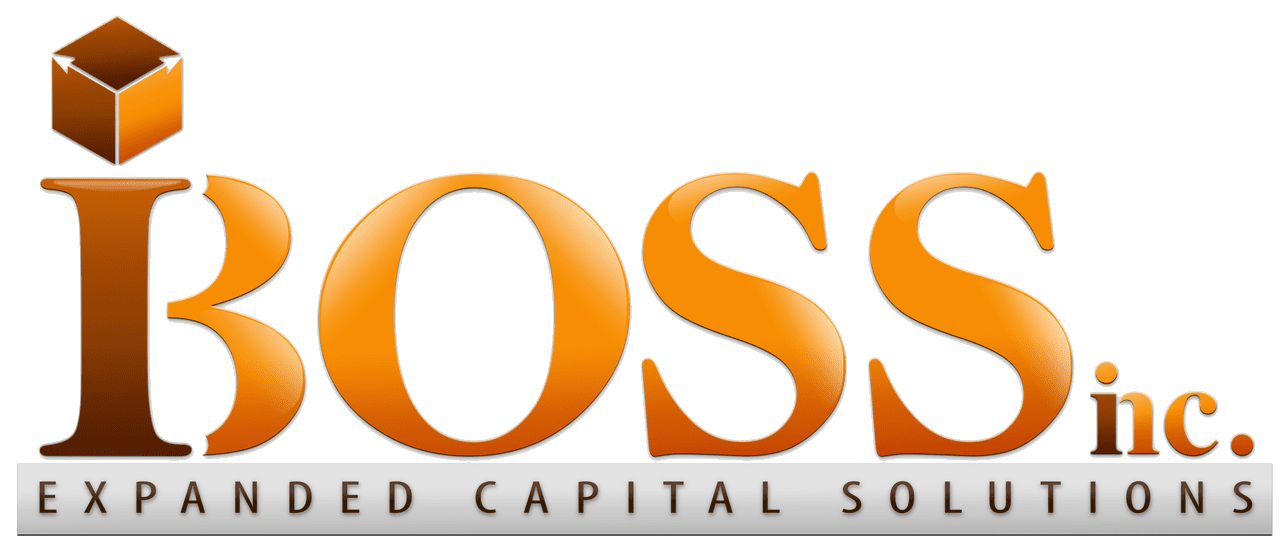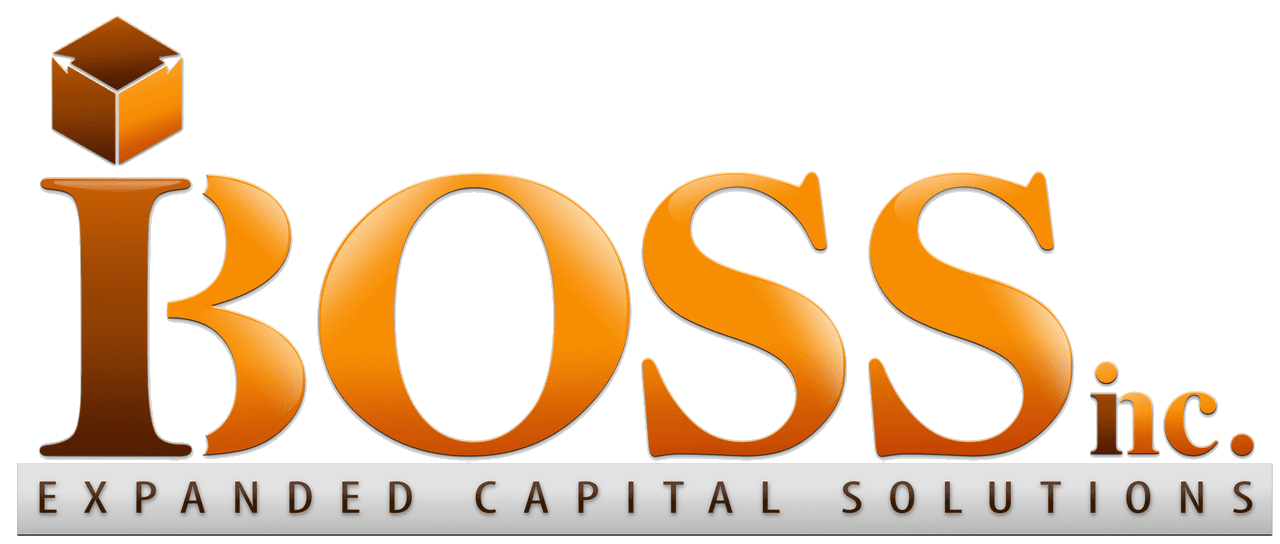06_From ESOPs to Mergers – What Suits Your Business Best?
06_From ESOPs to Mergers – What Suits Your Business Best?
![]() | Disclosure and Transparency Statement: This article includes AI-generated content; see the complete statement below.
| Disclosure and Transparency Statement: This article includes AI-generated content; see the complete statement below.
Asset Sale vs. Stock Purchase Sale
Selling a business is like deciding whether to sell your car piece-by-piece or the whole thing. Do you carry out the engine, wheels, and chassis to different buyers who want those specific parts? Or do you sell the entire vehicle, flaws and all, to someone who wants the total package? That's essentially the dilemma with an asset sale versus a stock purchase.
Take the founders of TechAdvantage, a tech company specializing in data analytics. They had built some game-changing predictive algorithms but had racked up sizable debts and faced a few lawsuits from disgruntled former employees. When they decided to sell, they weighed doing an asset sale versus a stock purchase.
In an asset sale, the buyers selectively pick what assets they want from the business, like choosing their favorite toppings at a frozen yogurt shop. For TechAdvantage, certain buyers were highly interested in acquiring their algorithms and customer data but wanted no part of the legal and financial mess. Understandably, this flexibility appeals to buyers. They skirt the existing liabilities and may also find the tax implications more favorable, thanks to a "step-up basis" that allows them to maximize their depreciation deductions.
However, TechAdvantage founders learned that an asset sale might create a tax nightmare for them, depending on their corporate structure. How the sales price gets allocated to the assets sold can significantly impact the tax bill owed. Plus, asset sales tend to be more complex and administratively burdensome compared to stock sales.
In a stock purchase sale, on the other hand, the buyer is acquiring the entire business - assets, liabilities, and historical baggage included. They're essentially stepping into the shoes of the current owners, taking over everything from employee contracts to pending lawsuits. This method appeals to buyers looking for a turnkey acquisition target without having to cherry-pick specific assets.
The TechAdvantage team found that this setup might work more in the seller's favor. In many cases, stock sales get taxed at the lower capital gains tax rates, making it a more tax-efficient exit strategy. And the legal transfer of ownership is typically more straightforward since it's just the transfer of stock certificates rather than multiple assets.
Ultimately, the TechAdvantage founders opted for the stock purchase sale, accepting a slightly lower bid from a buyer willing to take on all operational aspects of the business. It maximized their after-tax proceeds and minimized the transactional complexity accompanying an asset-by-asset sale process.
So, choosing between an asset sale and a stock purchase sale boils down to a complex balancing act - tax implications, liability assumptions, ease of process, and ultimately, the buyer's and seller's goals must be weighed carefully. However, understanding the critical differences between these two pathways can pay significant dividends as business owners chart their exit plans.
Mergers, Acquisitions, and Buy-outs - Understanding Your Options
When business owners start considering an exit strategy, they're often hit with an alphabet soup of options - M&A, LBO, IPO, SPAC. It's enough to make your head spin! But let's try to break down some of the most common routes and what makes them unique.
Let's take two fast-growing tech firms - EcoTech and GreenInnovations - exploring a merger. Both companies were winning in their own niches but had hit roadblocks to scaling further.
EcoTech had pioneered some breakthroughs in clean energy tech but lacked the manufacturing and distribution capabilities to meet demand. GreenInnovations, on the other hand, had built an extensive global logistics network but didn't have the next-gen sustainable products the world was clamoring for. So, by combining forces in a merger, they could leverage each other's strengths for the ultimate win-win.
In a merger, it sounds like two separate companies join forces to create a bigger, more formidable entity together. It's typically done when the leadership of both companies realizes they can accomplish more together than apart. Mergers can provide game-changing synergies but also require navigating a delicate dance of integrating distinct cultures and operations.
In contrast, acquisitions are fundamentally different. Think of it as a predator acquiring its prey in the corporate jungle. A larger company essentially swallows up a smaller one in pursuit of expansion, dominance, and gaining capabilities.
Take the industry titan MegaCorp, for example, when they made a bid to acquire one of EcoTech's key competitors, NicheTech. MegaCorp's leadership was desperate to gain a foothold in the sustainable energy space, and acquiring NicheTech would allow that overnight. It's like cheating your way to the top instead of working hard to get there organically.
But that shortcut doesn't come without tradeoffs. Acquisitions can face major cultural clashes, talent losses, and integrated challenges. And the acquired company often loses much of its identity and decision-making autonomy in the process.
Beyond the heavyweight mergers and acquisitions strategies, business owners also have a few alternatives to consider that keep the ownership a bit closer to home. Management buy-outs (MBOs) and buy-ins (MBIs) are two options tailored for leadership looking to take over the reins.
In an MBO, the current management team pools their money and resources to buy out the business from its existing owners. The leadership at DesignCo navigated this route when the founders were looking to retire to the Italian countryside to make wine and olive oil. Because the management team was already running the show, it provided excellent customer continuity while allowing the founders to exit smoothly.
Conversely, an MBI involves bringing in an entirely new management team to take over the business, which can be a great spark for a struggling company needing rejuvenation and a fresh strategic vision. Private Equity Groups (PEGs) target lackluster companies ripe for a takeover by ambitious outsiders. The risk here is that employees might resent the newcomers coming in to shake things up.

Clearly, there's no one-size-fits-all path to securing the future ownership and leadership of your life's work. As the examples illustrate, each option - merger, acquisition, MBO, MBI - has unique benefits and tradeoffs for both buyers and sellers. Doing your homework to understand which path best aligns with your goals and risk appetite is crucial when charting your endgame as a business owner.
Navigating Different Business Sale Approaches
When starting the process of selling your business, one of the first big questions is: how fast do you want this to happen? The desired timeline often dictates the best approach to pursue. I've advised business owners across the spectrum of urgency and time horizons when preparing their exit plans.
A business sale's traditional, slow, and steady path is likely the best fit for those not in a particular rush. Let's look at the founders of ClassicFurnishings, a profitable furniture manufacturer, exploring a traditional sale when they started planning their retirement. They built the business over decades and wanted to take the time to find the right steward to carry on their legacy.
In a traditional business sale, you typically hire a business broker, list the company on various sales platforms, or directly reach out to prospective buyers. Expanding your visibility and legitimacy to a broad spectrum of potential acquirers. The downside is that it can be a lengthy process, perhaps too public for some. And when the whole world knows you're eager to sell, you tend to attract more tire kickers than serious buyers.
On the other end of the timeline spectrum are distressed sales - the "everything must go ASAP!" liquidations of the business world, such as the owners of RetailRapid, formerly a booming chain of retail stores before the internet drove them to the brink of bankruptcy. Cash was drying up quickly, and their only hope was to sell off assets for whatever they could get before it was too late.
Distressed sales often mean settling for fire sale prices because you have no leverage and few alternatives. But for some businesses facing the cliff, locking in a quick exit on unfavorable terms may beat the alternative of having no interested buyers at all later on.
Somewhere in the middle lies the targeted, strategic sale - picture a skilled sniper zeroing in on the most lucrative target rather than spraying bullets everywhere. TechSolutions, a niche enterprise cloud application player, identifies GlobalTech as an ideal buyer. While GlobalTech wasn't formally searching for acquisitions, TechSolutions realized they should be very interested in bringing their cutting-edge capabilities in-house.
Through some connections, TechSolutions' leadership was able to pitch GlobalTech's CEO directly on the synergies of an acquisition. While still intensive, this targeted approach can accelerate the sale process compared to a more open-ended traditional process. And identifying unique synergies usually commands higher multiples as well.
As these examples illustrate, the approach to selling your business can span the spectrum - from posting online listings that attract anonymous bidders to courting individual, highly targeted prospective partners. Like buying or selling real estate, choosing between the rapid-fire auction route, leveraging a seasoned agent or FSBO advertising depends greatly on your objectives and situation. Before kicking off that "for sale" sign process, take the necessary time to decide what approach gives you the highest probability of successfully transitioning your business.
Exploring Alternative Strategies in Business Sales
Business owners often feel limited to the binary choice of selling their entire company or not selling at all when charting an exit strategy. But the range of options is far more diverse than many realize at first. While advising business owners, I've explored some creative alternatives that address unique needs and constraints.
Let's peek into the CEO of InnovateTech, a technology conglomerate with its fingers in many pies, from consumer electronics to enterprise software. While assessing potential exit strategies, it became apparent that some business units were far more attractive acquisition targets than others. Rather than offload the entire mixed bag bundle, they explored carving off individual assets.
Selling a portion of a business rather than its entirety can be a strategic play for both sellers and buyers. Sellers extract much-needed liquidity to fund growth initiatives while retaining control over the parts core to their mission. Buyers get to cherry-pick the specific assets that are most complementary without taking on unnecessary baggage or inflation from less relevant units.
Of course, the risk of this sliced-and-diced approach is that the individual pieces struggle to thrive without key synergies with the parent organization. And owners can get distracted managing too many disparate offshoots versus strengthening core operations. But under the right circumstances, it strikes an effective balance between realizing immediate value and retaining long-term upside.
Beyond just discarding business units, crafting even more creative deal structures is more advantageous to bridge divergent interests between buyers and sellers. One example was incorporating an earnout clause for a digital marketing agency, MarketMasters, to sell its business. The prospective buyer loved the business but felt the seller's asking price was too inflated based on projected growth.
So, rather than leaving money on the table or walking away from the deal entirely, an earnout provision should be added where the buyer would pay a lower upfront amount supplemented by future payments tied to hitting revenue milestones over the subsequent three years. The earnout gave the buyer confidence that they wouldn't overpay if the projections proved aggressive while incentivizing the seller to ensure a smooth transition and continued growth post-close. Earnouts can be a game-changing tool for bridging valuation gaps when structured properly.
Some business owners also start planning early for tax-efficient, employee-friendly transitions through ESOP structures. While complex, ESOPs (employee stock ownership plans) allow owners to sell equity gradually to employees, often at favorable tax rates. This unique path can boost employee loyalty and engagement, allowing founders to execute nimble, multi-stage exit strategies.
The world of business sales goes far beyond the stereotypical complete acquisition by a financial buyer or strategic player. As the examples above show, business owners can often find alternatives well aligned with their personal values and financial objectives by embracing flexible deal configurations, tax-optimal structures, and unconventional buyers.

Understanding Valuation Across Different Sale Types
One of the most intimidating aspects of selling a business is figuring out that magic number - the valuation. How do you accurately price the blood, sweat, and tears you've poured into building your company? The path to answering that question depends heavily on the type of sale you choose. Over the years advising business owners, I've developed a few rules of thumb for valuations across some common sale formats.
The valuation process in a straight asset sale resembles an antique dealer inspecting a dusty old wardrobe. They evaluate each element separately - knocking on wood, examining the joinery, judging the varnish. Likewise, in an asset sale, the individual components get appraised based on replacement cost, depreciated value, sales prices of comparable gear, etc.
GadgetInc was apprised of potential exit paths to break down the value driver by driver - from the proprietary manufacturing equipment to the intangible intellectual property like patented designs and processes. And how, when tallied up individually, the total asset value exceeded what any buyer would pay for the entire business. But it provided a helpful baseline for setting expectations.
On the other hand, a stock sale is more like valuing a lavish four-bedroom home in the hottest neighborhood. Buyers care more about the full package and future earnings potential than the sum of the parts. The classic valuation method here relies on EBITDA or net income multiples.
For example, TechGlobal Corp validated its valuation for a prospective stock acquisition; by looking at public comps and private transaction data, they pegged the appropriate EBITDA multiple at around 8x. Applying this to TechGlobal's average EBITDA over the last three years yielded a valuation of approximately $25M. This holistic assessment came in lower than the assets would have commanded individually but provided an accurate, market-driven appraisal.
Another variation to consider is strategic versus financial sales. In a strategic acquisition, the valuation shoots up if clear synergies exist between buyer and seller. Think of it like a motorcycle enthusiast buying a fixer-upper bike with an emotional premium because they envision its potential once restored to glory.
The valuation leaped considerably when EcoClean Solutions, a pioneering green tech startup, was approached by a large sustainability-focused conglomerate for a strategic acquisition play. The alignment in mission and mutual benefits of combining forces boosted the price the buyer was willing to pay. Of course, financial buyers like private equity groups stick to more standardized, calculated formulas to value acquisition targets. But strategic sales allow more creative pricing.
And no discussion of valuations is complete without touching on distressed sales. Just like foreclosure properties get penalized, distressed businesses struggle to realize full, fair value. When the clock is ticking loudly before unpaid debts swallow a company whole, buyers gain considerable leverage to drive sharp bargains.
While the exact calculus varies, the process for accurately valuing a business as an acquisition target relies on a profound understanding of buyers' motivations and methodologies to formulate offers aligned with their objectives. Only with insight into these critical nuances can sellers set their expectations and negotiate from an informed vantage point during this defining moment in their entrepreneurial journey.
Conclusion
Selling a business is hugely complex, but this guide, "The Art of the Deal," masterfully demystifies the process for overwhelmed entrepreneurs. It delivers an indispensable blueprint tailored to business owners navigating the challenges of charting an exit strategy.
The article quickly establishes a framework by contrasting asset sales versus stock sales. It demonstrates how these two pathways differ markedly in execution and outcome through digestible examples, clarifying the vital implications of deal structure upfront as owners plot their course.
Beyond foundational deal formats, the guide explores more creative configurations like partial sales, built-in earnouts, and ESOPs suited to specific objectives. It underscores how business sales need not follow cookie-cutter templates with an appreciation of all available alternatives.
The article contextualizes abstract concepts through relatable scenarios –an eco-friendly merger or a design shop management buy-out. This device gives tangible life to legal terminology, ensuring readers grasp the human element and not just sterile definitions.
Finally, the content culminates in a masterclass on valuation complexity across different deal types. It outlines how assessment strategies diverge based on structure and buyer goals through understandable metaphors and real-world case studies. This best practices crash course offers actionable insights for negotiating from a position of know-how.
While business sales appear intensely intricate at first glance, this resource distills the moving pieces into workable frameworks custom-tailored to entrepreneurs. Any leadership team would benefit from absorbing its hard-won wisdom before embarking on the quest to monetize their life's work.
Upcoming Article: Stay tuned for our forthcoming article to discover innovative and effective strategies in 'Financing the Future: Navigating Seller Financing and Earnouts,' where we explore creative financing solutions to ensure smooth and successful business transitions.
Previous Articles in This Series
01 - Building the Base: Cultivating an Organic Database of Potential Investors - The Foundation of Investor Engagement
02 - 1st Impressions: Master the Art of Introducing Your Business to Investors - Crafting an Irresistible Narrative Online and Offline
03 - The Engagement Equation: Strategies to Connect with Potential Investors - Turning Introductions into Meaningful Interactions
04 - Preparation is Key: Getting Your Business Ready for a Profitable Exit - Essential Steps to Prime Your Business for the Market
05 - Identifying Your Ideal Buyer: Selling Your Business to the Right Hands - Understanding Buyer Personas for Solopreneur and Small Business Sales
Disclosure and Transparency Statement:
This article is founded on my industry knowledge and expertise, coupled with the assistance of artificial intelligence (AI) tools. As a committed advocate for small businesses and a pioneering voice in expanded capital solutions, I leverage technologies such as OpenAI, Bard, Bing, Claude, Grammarly, and other aids in my productivity, research, and composition processes interchangeably. This includes writing, editing, refining, or assisting in creativity, brainstorming, or outlining. The core substance of this content is sourced and prompted by my extensive experience and industry acumen of over 30 years. This and other blog posts have been refined to provide clarity and substance in service to the readers' success.




